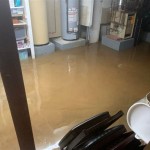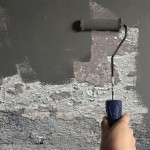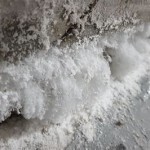How to Insulate a Basement Floor
Basements are often overlooked when it comes to insulation, but they can be a major source of heat loss. In fact, up to 20% of your home's heat can escape through an uninsulated basement floor. This can lead to higher energy bills, a less comfortable home, and even mold and mildew problems.
Fortunately, insulating a basement floor is a relatively easy and inexpensive project that can make a big difference. Here's how to do it:
1. Choose the right insulation
There are a few different types of insulation that can be used for basement floors, but the most common are:
- Batt insulation is made of fiberglass or cellulose and comes in rolls. It's easy to install and can be cut to fit any space.
- Rigid foam insulation is made of polystyrene or polyurethane and comes in sheets. It's more expensive than batt insulation but provides better insulation and is easier to work with.
- Loose-fill insulation is made of fiberglass, cellulose, or vermiculite and is poured into place. It's less expensive than other types of insulation but can be more difficult to install.
The type of insulation you choose will depend on your budget, the size of your basement, and the amount of insulation you need.
2. Prepare the basement floor
Before you install insulation, you need to prepare the basement floor. This involves cleaning the floor and removing any debris. You may also need to level the floor if it's not already level.
3. Install the insulation
The method for installing insulation will vary depending on the type of insulation you choose. However, here are some general tips:
- Batt insulation: Roll out the insulation on the floor and cut it to fit. Staple the insulation to the floor joists.
- Rigid foam insulation: Cut the insulation to fit and glue it to the floor. You can also use screws to secure the insulation.
- Loose-fill insulation: Pour the insulation into the space between the floor joists. Use a rake or hoe to spread the insulation evenly.
4. Cover the insulation
Once the insulation is installed, you need to cover it with a vapor barrier. This will help to prevent moisture from getting into the insulation and causing mold and mildew problems.
You can use a plastic vapor barrier or a foil-faced vapor barrier. The plastic vapor barrier is less expensive, but the foil-faced vapor barrier provides better insulation.
5. Finish the basement floor
Once the vapor barrier is installed, you can finish the basement floor as desired. You can install carpeting, tile, or hardwood flooring.
Benefits of Insulating a Basement Floor
There are many benefits to insulating a basement floor, including:
- Reduced energy bills: Insulating your basement floor can help to reduce your energy bills by up to 20%.
- Increased comfort: A well-insulated basement will be more comfortable in the winter and cooler in the summer.
- Reduced mold and mildew problems: Insulation can help to prevent moisture from getting into your basement and causing mold and mildew problems.
- Increased home value: A well-insulated basement can increase the value of your home.
If you're looking for a way to improve the comfort of your home and reduce your energy bills, insulating your basement floor is a great option.

Insulating And Finishing An Old Basement Floor Fine Homebuilding

What S The Best Way To Insulate A Basement Slab Greenbuildingadvisor

Installing Rigid Foam Above A Concrete Slab Greenbuildingadvisor

How To Insulate Your Existing Concrete Slab With Halo S Interra In 5 Easy Steps Buildwithhalo Com

Basement Concrete Floor How To Insulate It

Thermaldry Insulated Floor Decking Basement Subfloor System

Detailing A Superinsulated Slab Jlc Online

Cold Floors Over Basements How To Create A Warmer Floor Your Basement

Basement Subfloor Insulation Home Ca

The Secret To A Warmer Drier Faster Finished Basement Amvic Systems
Related Posts







